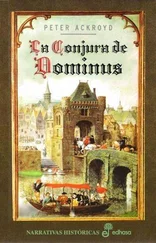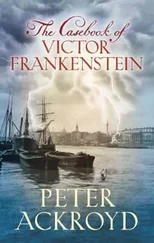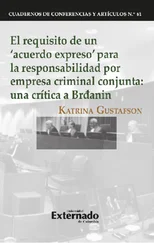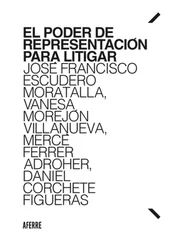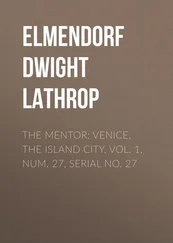On one occasion in the 1750s five orchestras were deployed in the basilica of Saint Mark’s under the direction of Baldassare Galuppi. In that church, too, there was a tradition of polyphony taken up by two or more choirs singing antiphonally or simultaneously to the accompaniment (if they were needed) of four organs. It was a divine machinery of sound, amplified by the labyrinthine acoustics of the space. It is not at all extraordinary that musical events were held there, on the afternoons of Sundays and of holidays. The nature of these “polychoral” events, in which opposing forces eventually achieve harmony, was uniquely suited to the bias of the Venetian state. The “echo” effects of polychoral music were not inimical, either, to a city of reflections upon water.
The orphan girls in the charitable institutions of the state were given an extensive and elaborate musical training, so that their concerts became the wonder of the age. These institutions, known as ospedali , became in essence musical conservatories where young girls learned how to sing, to play, and to compose new works. They also attracted the maestri of Venice as their instructors. Antonio Vivaldi, for example, was for four decades the musical master of the Ospedale della Pietà. The girls were situated in singing galleries, enclosed by wrought-iron grilles so that their voices and melodies might have come from unseen angelic powers. Charles Burney reported, in the summer of 1770, that “the girls played a thousand tricks in singing, particularly in the duets, where there was a trial of skill and natural powers, as to who could go highest, lowest, swell a note the longest, or run divisions with the greatest rapidity.” Individual girls had their own cabals of admirers. The fact that they were orphaned only contributed to their power. But they were not nuns. Young men came to the ospedali with offers of marriage to those whose voices pleased them best. There was no sound of applause, in the churches of these institutions, but instead the audiences wept and prayed. There are reports of men and women fainting at the intensity of sound. Gondolas were moored in the adjacent canal, or rio , with their passengers straining to hear the sounds from within. Diverse observers, Rousseau and Goethe among them, have testified that these girls ravished and stupefied the senses. “I cannot imagine anything,” Rousseau wrote, “so voluptuous, so touching as this music.” This sensuousness strikes the right Venetian note.
The harmonies of Venice had another aspect. The ancients believed music to be the token of the ordered cosmos. Since Venice was the preeminent exponent of ordered governance in the world, it was only natural that music should emanate from it. It contained the music of the spheres. It partook of heaven and of earth. The gates of paradise had opened in the city. All the various forms of constitution—monarchy, oligarchy and republic—were moulded and mingled together. These were celestial harmonies, imparted by God. Even the merchants of Venice were educated in the rules of proportion, in mercantile textbooks such as The Rule of Three also known as The Golden Rule or The Merchants’ Key . Pythagorean mathematics was an important feature of commerce. The architecture, or architexture, of the city was conceived harmoniously. If it is indeed true that buildings have been raised by the power of music, then the churches and noble houses of Venice have assuredly embodied the melody of the world. The architects of the day studied theories of harmony. In foreign policy the doge and senate strove to maintain a “balance” of powers; they strove for peace, it was said, because peace reflected harmony in every sense.
Just as in a sonata or concerto no one instrument must dominate the others, so in the Venetian state no one interest or authority could be allowed to influence the rest; all was of a piece. No one may rise too high, or fall too low. Nothing was out of proportion. The aim was perfect order. And that, to a large extent, and to the amazement of the rest of the world, was achieved. When the figure of Apollo was carved in a niche of the loggetta at the base of the campanile of Saint Mark’s its sculptor, Jacopo Sansovino, declared that “it is known that this nation takes natural delight in music, and therefore Apollo is represented to signify music … extraordinary harmony perpetuates this admirable government.”
The dances of the city, therefore, have some significance. The diaries of Venetians suggest that there was almost uninterrupted public dancing in the squares and courtyards of the city. In the noble houses, dancing in the ballroom was a favoured means of expression. There were “dances for women,” events in which more than a hundred females might participate. There were scores of dancing schools, teaching “the Hat dance,” “the Torch dance” and “the Hunt.” Dances were performed on barges. They were an important aspect of the ubiquitous street theatre. So the movement of the spheres was reproduced in the streets of the city. In one painting by Gabriele Bella, “Festo dà Soldo in Campiello,” a group of Venetians, male and female, are to be seen dancing in formal measures to the accompaniment of two violins and a cello. Their fellow citizens watch from the balconies, or from the neighbouring tavern, as the women twirl their aprons and the men raise their arms in the air. And of course the popular performances of the commedia dell’arte had their own frenzied dances, together with a litany of vulgar and satirical songs.
And then there is the nature of music as an expression of political life. Thus we may say that humankind comes into the world to maintain and to celebrate the structure into which it is born; there is a joy in formal order and display. There is a joy in the endless echoes and repetitions, so much like the governance of Venice. There is deep solace to be found in the experience of harmony where is heard the voice of tens of thousands rather than that of one. The music of Saint Mark’s was under the direct control of the state procurators, an expression of the evident fact that Roman Catholicism had been transformed into a state Church. There was, or was supposed to be, a profound concord between faith and the city and the harmony of song. To put it more crudely, music became a form of political propaganda. The paintings and engravings of the various civic processions always depict the drums, the cymbals and the silver trumpets. Music then became a method of maintaining social order. Many Venetian operas used allegory to comment upon contemporary events, with Venice as the heroine of all encounters. Venice then became Venetia, the unassailable virgin holding sword and scales—“ ecco Venezia bella ”! In one production, Il Bellerofonte , an exact and elaborate model of the city arose from the sea to the accompaniment of music.
The painters of Venice were also devotees of music. Vasari seems to consider Tintoretto’s musical skills, for example, as more worthy of praise than his painterly achievement. Veronese’s “Wedding at Cana” shows a quartet playing to the invited guests; the members of that musical group have been identified as Titian, Tintoretto, Bassano and Veronese himself. Thus when Walter Pater, in his study of the Venetian artist Giorgione, suggested that “all art constantly aspires towards the condition of music” he was identifying one of the central tendencies of Venetian art. Pater adds that in the Venetian school following Giorgione “the perfect moments of music itself, the making or hearing of music, song or its accompaniment, are themselves prominent as subjects.” Oil paint can be liquid music. So we read of Titian’s “tonic harmonies” and “rhythmic movements,” and of the “eager, quick tempo” of Lorenzo Lotto. The language of Tintoretto’s composition seems invariably to be also the language of music. When we gaze upon the architectonic harmonies of Tiepolo, we hear the music of Vivaldi’s violins energetic and triumphant. On the other side, there are references to Vivaldi’s “delight in orchestral colour.” In the language of the Venetian arts, music and painting seem to be twinned. In his painting known as “The Vision of Saint Augustine” Vittore Carpaccio, the great designator of Venetian scenes, depicts the saint in a musical universe; Augustine has written on sheets of music the notes for tenor and contralto, while at his feet lie works of music sacred and secular. The vision, then, is one of transcendent harmony.
Читать дальше




